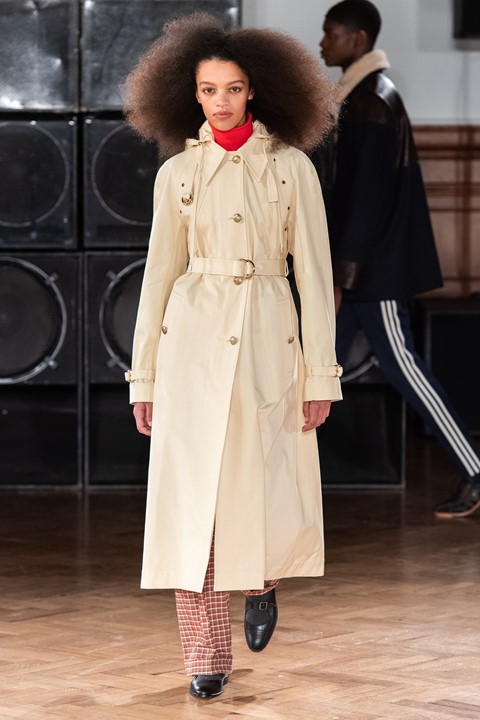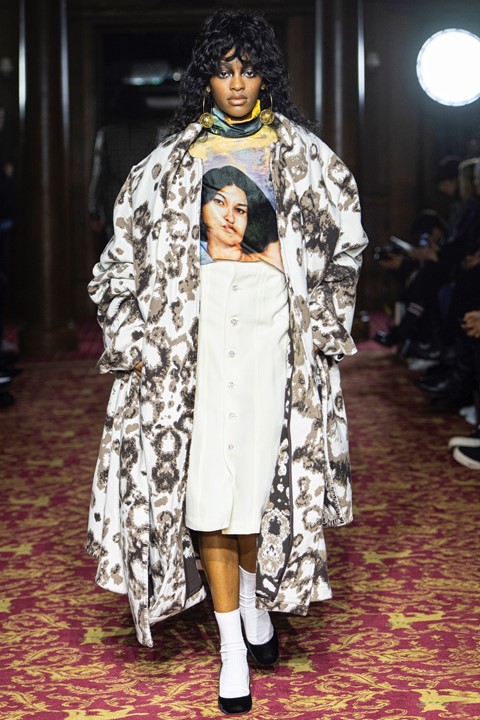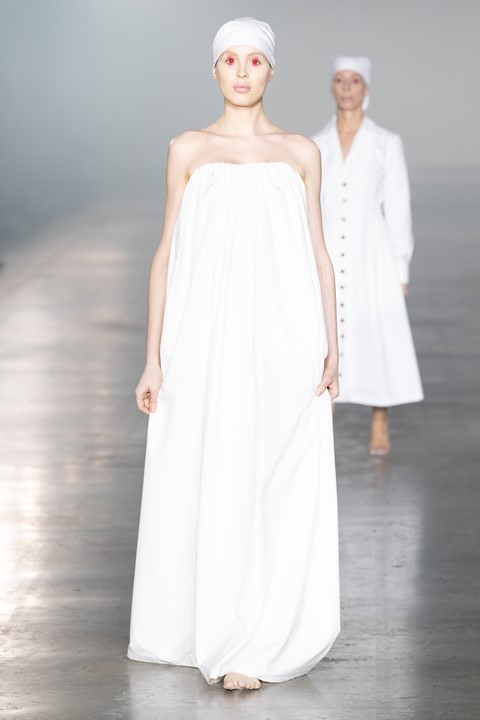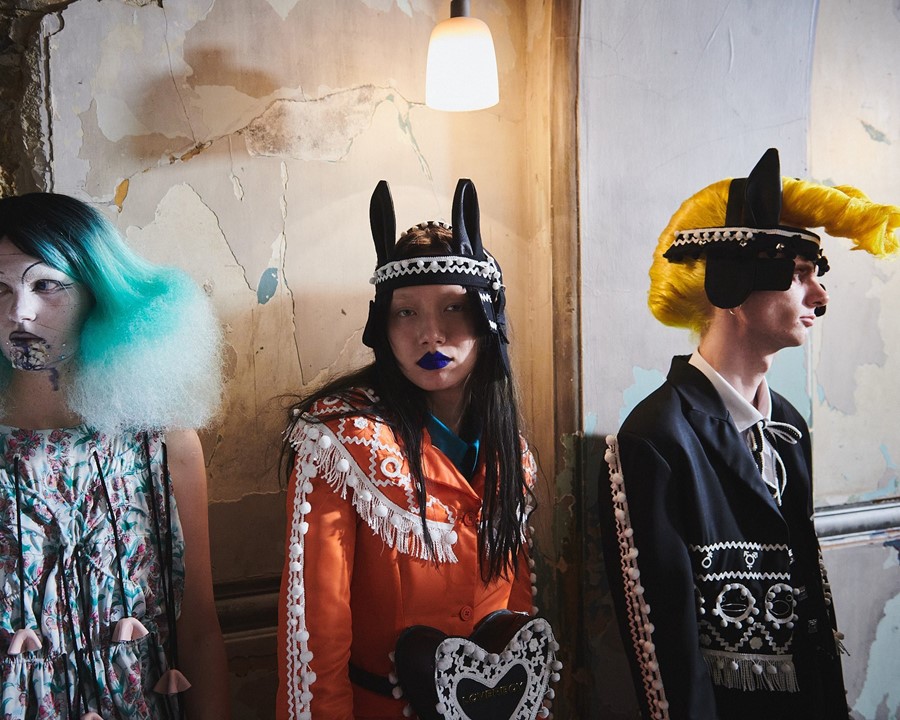Despite its name, London Fashion Week Men’s – which took place this weekend – provided numerous looks for women. Here, five of our favourites, from Wales Bonner to Charles Jeffrey LOVERBOY
1. Wales Bonner
Exploring communities, and the way they dress, has been a central tenet of Grace Wales Bonner’s work since the launch of her eponymous label, Wales Bonner, in 2014. This season, she did so with a collection dedicated to Lovers Rock, a tender form of reggae born out of underground blues parties in 1970s London. Also taking inspiration from the photography of John Goto, the collection mined the style and spirit of the parties, nights, clothes and loves of British African-Caribbean youth of that era. Irreverent yet elegant, the collection deftly wove references to Jamaican style – the designer’s grandfather came from Jamaica in the 1950s – with classic British staples. Standout womenswear looks included sweeping pleated skirts worn with preppy jackets, and a cinched-waist cream trench coat. Like the sounds of Lovers Rock itself, the collection was, according to the designer, “a sweet song to the strength of community”.

2. Martine Rose
Community also played a part in Martine Rose’s Autumn/Winter 2020 collection, which was held in the Kentish Town primary school her four-year-old daughter attends. “Primary schools are magical,” Rose said after the show. “The teachers are here, there’s a lot of people with kids – it’s another community, isn’t it?” The feted menswear designer included a spattering of womenswear looks in the subculture-influenced collection, which drew from multiple and far-reaching references spanning the 1970s, 80s and 90s, encompassing sports- and Westernwear and preppy British tailoring. A sexy black vinyl dress, cut like a blazer, was undoubtedly the standout womenswear moment of the evening.

3. Edward Crutchley
Yorkshire-born Edward Crutchley splits his time between London, where his namesake label is based, and Paris, where the Central Saint Martins alumnus continues to work alongside Kim Jones at Dior Men (previously, he consulted for Jones during his tenure at Louis Vuitton). The latter has given him an innate understanding of luxury; his own clothing for men is glamorous and tinged with nostalgia, drawn from a multitude of references. This weekend’s show was no exception: a cocktail of inspirations included traditional Filipiniana dresses, antique Javanese batik, Nudie Cohn’s Western suits, 90s Versace, mid-18th century English chintz and the work of American painter Erik Jones. Masterfully pulled together by the accomplished designer, the collection also included looks for women – among them, clashing checkered skirt-suits, expansive opera coats and richly decorated dresses, printed with colourful female forms.

4. Charles Jeffrey LOVERBOY
Set in the grand hall of the Battersea Arts Centre, Charles Jeffrey presented an Autumn/Winter 2020 collection inspired by centuries-old pagan ceremonies undertaken by rural communities on the Orkney islands. Multifarious textures and tartans came together in a show that referenced the designer’s Scottish roots, and women walked the runway in a series of dresses: some rendered in dainty florals (there were also suits in similar prints) and traditional tartans, others with exaggerated ruffles and Loverboy-esque broderie, worn with feather-strewn black combat boots.

5. Art School
Founded in 2017 by fashion and art criticism graduates Eden Loweth and Tom Barratt, Art School is a London label carving out a space for contemporary queerness in fashion. Graceful, dark and otherworldly, the design duo’s Autumn/Winter 2020 collection presented on Saturday continued their exploration of gender and performance, seeing models with red and white eyes (plus other astonishing beauty looks, including chest-hair carefully sculpted to read ‘Art School’ on one model) slowly glide down the runway barefoot in a series of monochrome pieces. The clothes themselves – suits and dresses which artfully blended modern tailoring, period silhouettes and elements of puritanical dress – were designed for everybody, whatever your gender identity may be.

